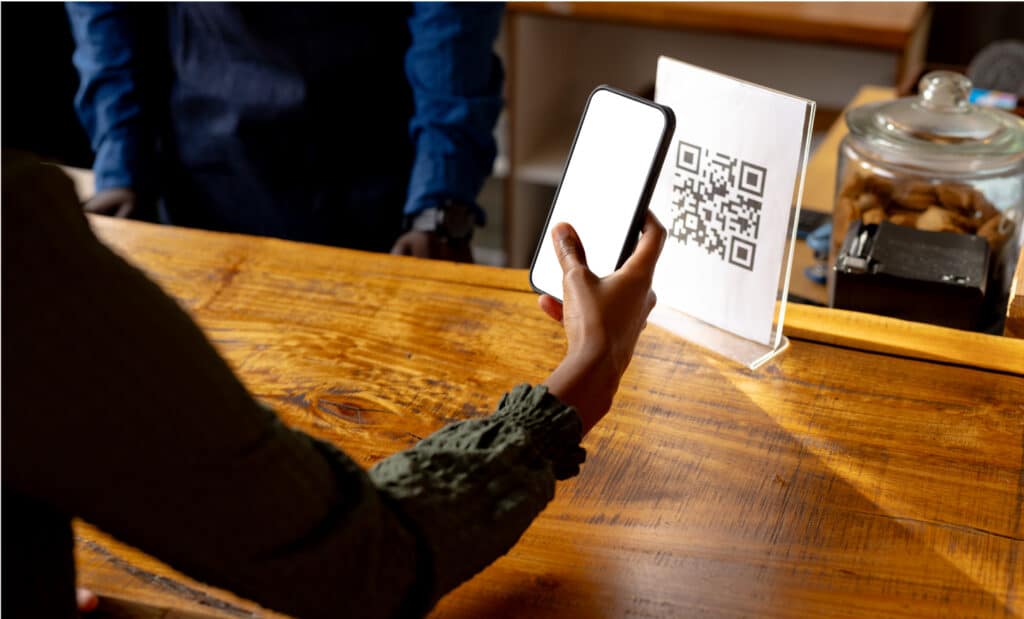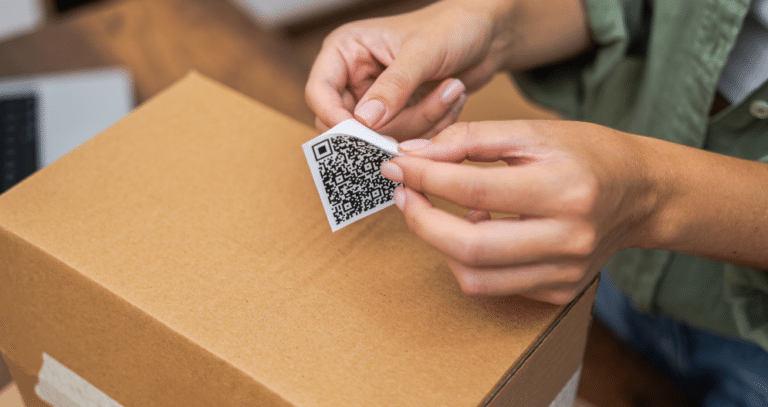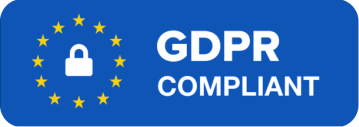If you’ve ever wondered, “What is a dynamic QR code?”, you’re in the right place. In this guide, we’ll break it down in clear, practical terms — showing not just how dynamic QR codes work, but how you can use them to create smarter, more flexible experiences in the real world. From understanding what makes them different to unlocking their full potential in everyday marketing and business, let’s dive in.
Understanding QR codes
QR codes — short for Quick Response codes — pack a lot of information into a small, square design. Unlike traditional barcodes that stretch across a label and hold just 20 to 25 characters, QR codes go two-dimensional, stacking information vertically and horizontally to store hundreds of characters in a tiny space.
That simple shift makes them incredibly versatile, whether you’re sending someone to a website in a snap or managing complex data in a fast-moving business environment.
What makes QR codes unique?
You can spot a QR code a mile away: a sharp black-and-white grid, anchored by three bold squares at the corners. Those squares aren’t just for looks — they help scanners instantly recognize the code from any angle, making the whole process fast, reliable, and user friendly.
The real magic? QR codes store data both across and down the grid, unlike old-school barcodes that only go one way.
The versatility of QR codes
QR codes aren’t limited to links. You can encode text, phone numbers, email addresses, geographic coordinates — even full vCards for digital business cards. It’s this flexibility that has turned them into a staple for personal use and professional marketing alike.
All it takes is a quick scan with your phone’s camera (or a simple app) to unlock whatever information is hiding inside.

QR codes in everyday use
You see QR codes everywhere — product packaging, billboards, digital screens at airports. Brands use them in marketing campaigns to steer customers straight to landing pages. Restaurants post them for touchless digital menus. Event organizers splash them on signage so guests can pull up schedules and maps in seconds.
Once you start noticing QR codes, you realize they’ve quietly become part of daily life.
The data capacity of QR codes
A standard QR code can store up to 4,296 alphanumeric characters. That’s enough space for a website URL, a full business page, or detailed product info — all crammed into a tiny square without losing a bit of clarity.
Thanks to clever compression, QR codes keep the data compact but readable, even when packed with information.
What is a dynamic QR code?
A dynamic QR code is a next-generation upgrade from the traditional static QR code, built for flexibility and real-world agility.
Here’s the key difference:
- A static QR code permanently encodes its content. Once created, it’s locked — you can’t change the destination without generating a brand new code.
- A dynamic QR code, on the other hand, links to a short URL that redirects users to a desired landing page. That destination can be updated anytime, without altering the QR code itself.
This makes dynamic QR codes far more powerful. You can adjust messaging, fix outdated links, or change entire campaigns on the fly — all while using the same QR printed on your product packaging, business cards, or signage.
When you need to create a dynamic QR code, QR Code KIT is a platform you can count on. Founded in 2009, it was the first dynamic QR code generator on the market. Today, it offers a robust, user-friendly platform to help you create codes that grow and adapt with your needs — no reprints, no hassle.
How dynamic QR codes work
At their core, dynamic QR codes connect users to a flexible, editable destination — without ever changing the QR code itself.
When you scan a dynamic QR code, here’s what happens behind the scenes:
- Short URL: Instead of embedding hard-coded information, the QR code points to a short, manageable URL. This keeps the QR code compact and easy to scan.
- Redirection: The short URL redirects the user instantly to the final destination — whether it’s a landing page, a product offer, a digital menu, or any other piece of content.
- Content management: The true power of a dynamic QR lies in its flexibility. Through a platform like QR Code KIT, you can update the destination URL, swap out content, or adjust campaigns anytime — without having to reprint or recreate the QR code.
This redirection mechanism makes dynamic QR codes perfect for businesses that need to stay agile. Whether you’re updating promotions, refreshing event details, or tweaking a marketing campaign, your physical or digital QR code remains the same — only the experience behind it changes.
And with a trusted solution like QR Code KIT, managing and tracking your dynamic QR codes is simple, seamless, and scalable.
Dynamic QR codes offer advanced flexibility
The real power of a dynamic QR code lies in its adaptability. Instead of being stuck with one permanent action, you can adjust your campaigns, promotions, or resources whenever you need — without generating a new QR code.
This flexibility is a game-changer, especially when you’ve printed QR codes on thousands of brochures, product packaging, posters, or any surface where replacing them would be expensive or impractical.

QR Code KIT: Pioneering dynamic QR code generation
Since launching in 2009, QR Code KIT has been pushing the boundaries of QR technology. It was the first dynamic QR code generator on the market — and it’s still leading the way, helping businesses and individuals keep their digital content fresh, flexible, and engaging.
With QR Code KIT, users can create a dynamic QR, manage the linked content with ease, and track every scan to measure the success of their QR code campaigns. The platform makes dynamic QR code creation straightforward, whether you’re updating a business page, tweaking a marketing promotion, or simply fine-tuning your landing page strategy.
Practical applications of dynamic QR codes
Today, dynamic QR codes power smarter, more responsive experiences across a wide range of industries:
- Marketing campaigns: Change your messaging, promotions, or destinations mid-campaign based on how your audience responds — without needing a new code.
- Event management: Instantly update event schedules, venue details, or last-minute announcements, making sure attendees always have the latest information.
- Business operations: Direct customers, partners, or employees to updated forms, policies, schedules, or critical alerts — all through the same QR code.
Dynamic QR codes represent a major leap forward from their static counterparts. They blend the reliability of a static QR code with the flexibility today’s digital world demands. Whether you’re running large-scale marketing campaigns or simply want to make sure your QR codes stay relevant as your needs evolve, a dynamic QR code solution like QR Code KIT keeps you one step ahead.
How to identify a dynamic QR code
Knowing whether you’re dealing with a dynamic QR code or a static QR code isn’t just trivia — it can shape how you manage your campaigns and content over time.
Dynamic QR codes offer powerful flexibility, but you won’t be able to tell just by looking at the QR code pattern. Here’s how you can spot the difference:
Scanning the QR code
The easiest way to find out if a QR is dynamic? Scan it:
- Initial scan: Open your phone’s camera or a QR code scanner app and scan the code. You’ll land on a website or page.
- Record the URL: Pay attention to the URL you’re redirected to. If it looks like a shortened link, that’s a classic sign of a dynamic QR code.
- Revisit later: Scan the same QR code again after a while. If the page content has changed — or the destination itself is different — you’re definitely dealing with a dynamic QR.
Checking QR code features
You can also figure it out by looking at how the QR was created and what features come with it:
- Editable content: Platforms like QR Code KIT allow you to edit the destination URL anytime — a clear giveaway that it’s a dynamic QR code.
- Tracking capabilities: If you can see scan statistics, user engagement, or location data through the platform’s dashboard, it’s another strong indicator. Dynamic QR codes offer built-in tracking, while static ones don’t.
Examining URL structure
A dynamic QR code often gives itself away through the type of URL it uses:
- Short URL presence: If the URL is short and a little generic-looking, it’s likely masking the real destination — a hallmark of dynamic QR codes.
- Redirection behavior: Watch for a redirect when scanning. If you notice even a brief handoff before landing on the final page, you’re seeing dynamic content management in action.
QR Code KIT as a resource
Choosing a trusted platform like QR Code KIT makes identifying and managing dynamic QR codes simple.
As the first true dynamic QR code generator, QR Code KIT offers all the tools you need: short URLs, editable destinations, scan statistics, and flexible content management.
With QR Code KIT, you can create dynamic QR codes, monitor how they perform, and update them whenever your strategy changes — no new code needed.
Generating dynamic QR codes
Creating dynamic QR codes is simple when you’re using the right tools. They’re especially valuable for businesses and individuals who need to manage ongoing campaigns or update information — without the hassle of redistributing new QR codes.
With QR Code KIT’s Free Plan, you can get started right away — it includes up to two fully functional dynamic QR codes at no cost.
Here’s how you can generate dynamic QR codes, with a focus on using QR Code KIT, the first dynamic QR code generator on the market.
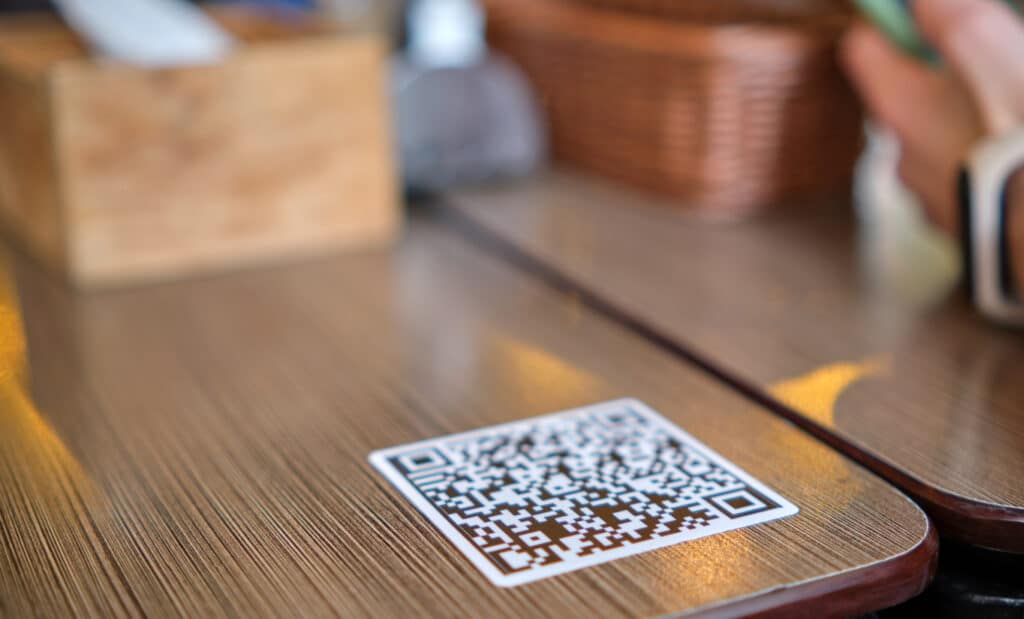
Step-by-step guide to creating a dynamic QR code
1. Choose a reliable QR code generator
Start with a platform that’s built for flexibility. QR Code KIT has been a trusted dynamic QR code generator since 2009, offering all the tools you need — from editing capabilities to tracking scan statistics — in one user-friendly dashboard.
2. Choose the type of QR code
Pick the format that fits your goal. With QR Code KIT, you can choose from several dynamic QR code types, including:
- Social media QR code: Link to your profiles or create a link-in-bio style hub.
- App store QR code: Automatically send users to the right app store for their device.
- Landing page QR code: Build a custom landing page without writing a single line of code.
- Menu QR code: Share a scannable digital menu — perfect for restaurants and cafés.
- File download QR code: Upload and deliver any kind of downloadable file.
- WhatsApp QR code: Start a chat instantly with a simple scan.
- Website QR code: Direct users to your website URL to learn more or take action.
- Digital business card: Let users save your contact details with one tap.
Each option is designed to help you connect, convert, or inform — all through a single scan.
3. Customize your QR code
With QR Code KIT, you can make a custom QR code that fits your branding. Add your logo, adjust the color scheme, and choose from different QR code pattern styles to make it visually appealing and instantly recognizable.
4. Set error correction levels
Dynamic QR codes can be configured with higher error correction levels, which help the code remain scannable even if it gets scratched, smudged, or partially obscured. This is especially useful for packaging or outdoor materials.
5. Test the QR code
Before going live, scan the QR code using multiple mobile devices and operating systems to make sure everything works. Confirm that it leads to the desired landing page or content.
6. Start tracking
With a dynamic QR code, you can track every interaction. See the number of scans, where they happened, what device type was used, and more. QR Code KIT makes it easy to analyze this data through built-in analytics tools, helping you optimize your QR code campaigns for better results.

Benefits of dynamic QR codes
A dynamic QR code offers a major upgrade over a static QR code — especially when it comes to flexibility, adaptability, and long-term value.
Whether you’re managing a marketing campaign, updating event content, or improving customer experience, dynamic QR codes give you the power to stay current without the hassle of reprinting. Here’s how they help businesses and users alike.
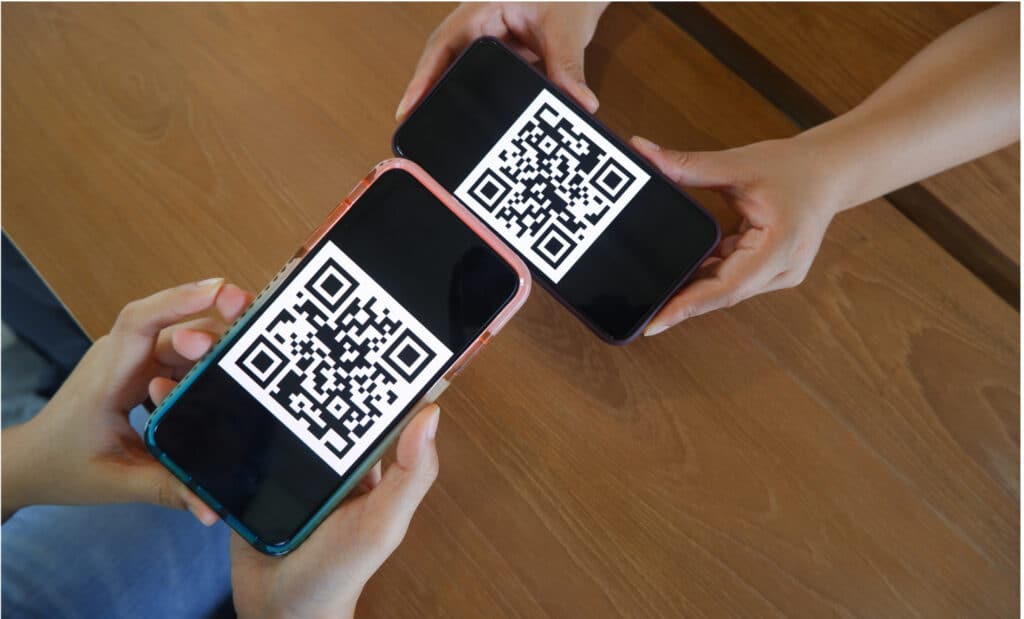
1. Update content seamlessly
One of the biggest advantages of a dynamic QR is the ability to change what it links to — without touching the code itself. Instead of being locked into a static QR code, you can redirect users to a custom page, new offer, or updated content anytime.
This is a game-changer for packaging, posters, menus, and long-term QR code campaigns where flexibility is key.
2. Enhanced tracking capabilities
Dynamic QR codes work with platforms like QR Code KIT to deliver detailed, real-time analytics. You can track:
- The number of scans
- Device types
- Geographic locations
- Scan time and frequency
You can even add UTM parameters or link the QR to Google Analytics for advanced reporting — turning every scan into actionable data.
This kind of insight helps you fine-tune your message, measure performance, and improve your campaign’s success.
3. Cost efficiency
With dynamic QR codes, you don’t need to reprint materials every time your link changes. That means lower costs on physical printing, signage, or packaging — especially for businesses managing large volumes.
You update the destination behind the scenes, not the QR code itself.
4. Greater user engagement
Because dynamic QR codes always lead to fresh, timely content, they help keep users interested and informed. For example:
- A retailer can update a QR to show today’s sale or limited-time promo.
- An event organizer can swap out old info for a live schedule or venue update.
- A brand can rotate messaging depending on location, season, or campaign phase.
This kind of adaptability creates a smoother experience — and helps build trust and engagement with your target audience.

5. Error correction and durability
Dynamic QR codes support higher error correction levels, which means they still work even if the code gets scratched, smudged, or partially covered. This makes them more reliable than their static counterparts, especially in high-traffic areas, on outdoor signage, or on packaging that may get handled frequently.
When durability matters, dynamic QR codes offer peace of mind — and consistent performance.
6. Versatility across industries
From retail and restaurants to events and healthcare, dynamic QR codes are being used just about everywhere:
- Retailers use them to swap out promotions without printing new materials.
- Restaurants update digital menus daily — or even in real time — based on inventory.
- Healthcare providers link to patient instructions, appointment updates, or digital forms that can change as needed.
This cross-industry versatility makes dynamic QR code solutions one of the most flexible tools in modern communication.
7. Personalization and customization
With tools like QR Code KIT, you can design a custom QR code that fits your brand perfectly. Add your logo, choose your colors, and even customize the QR code pattern to make it stand out.
That way, your QR isn’t just functional — it’s an extension of your brand’s identity.
8. Direct and immediate interaction
No friction. No extra steps. Just one scan.
Dynamic QR codes create a direct line between you and your audience. Whether you’re sending users to a signup form, video, landing page, or special offer, the experience is fast and intuitive.
This kind of instant connection removes barriers and boosts your chances of user engagement, conversions, and real results.
Are dynamic QR codes permanent?
In the world of QR code technology, the idea of “permanence” can be a bit nuanced — especially when it comes to dynamic QR codes. So, are they permanent? The short answer: yes, but with a few important things to keep in mind.
Let’s break it down.
What does “permanent” mean in this context?
Dynamic QR codes are considered permanent in the sense that the code itself never expires. Once generated, that square QR code pattern — printed or digital — remains scannable indefinitely.
What changes is the destination. Thanks to the flexibility of dynamic QR technology, you can update the URL or custom page it points to at any time, without changing the code.
Longevity of the QR code image
Once you’ve created a dynamic QR code, the image doesn’t need to be touched again. You can print it on product packaging, posters, or long-term signage — and even years later, it’ll still work.
Behind the scenes, you can change the destination URL, adjust your landing page, or rotate your campaign messaging — but the visible QR code stays the same.
This makes dynamic QR codes ideal for long-term use, especially in situations where replacing physical materials would be costly or inconvenient.

The role of the QR code platform
There’s one caveat: the permanence of a dynamic QR code depends on the platform that powers it.
For example, if you use a service like QR Code KIT, your dynamic QR code will keep working as long as your account stays active and the platform continues to support it. That’s because the short URL embedded in the code redirects through the platform’s servers — giving you editing power, tracking, and control.
No active account = no working redirect.
How to ensure continuous use
If you want your dynamic QR codes to keep functioning smoothly:
- Maintain an active plan with your QR code generator
- Periodically check the linked content to ensure it’s still relevant and working
- Update destinations as needed to keep user engagement high
When managed properly, a dynamic QR code is a long-term asset — durable, adaptable, and always ready to connect.

Conclusion
Dynamic QR codes are more than just a trend — they represent a major leap forward in how we communicate, market, and engage in the digital world.
Starting with the basics — what is a dynamic QR code and how it works — this guide has walked through everything from how to create and identify dynamic QR codes to why they outperform static QR codes in flexibility, tracking, and real-world value.
Unlike static ones, dynamic QR codes offer the ability to update content on the fly, gather detailed scan statistics, and create smarter, more agile campaigns without reprinting or redistributing anything. Their adaptability makes them invaluable across marketing, event management, customer service, and beyond.
Choosing the right platform is key — and QR Code KIT, the original dynamic QR code generator since 2009, sets the gold standard. It gives businesses and individuals the tools to create dynamic QR codes, track performance, and adapt strategies as they grow.
Looking ahead, dynamic QR codes are only going to become more powerful. As they integrate with technologies like augmented reality, machine learning, and enhanced security protocols, they’ll unlock even richer, more interactive experiences.
In short: dynamic QR codes aren’t just surviving — they’re thriving. They’re shaping the future of digital engagement, bridging the gap between physical spaces and digital actions, and offering a flexible, data-driven foundation for any smart digital strategy.
If you’re building for tomorrow, dynamic QR codes should be part of your toolkit.
